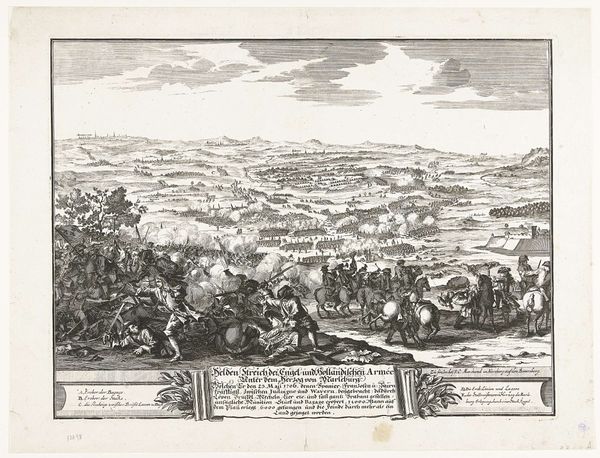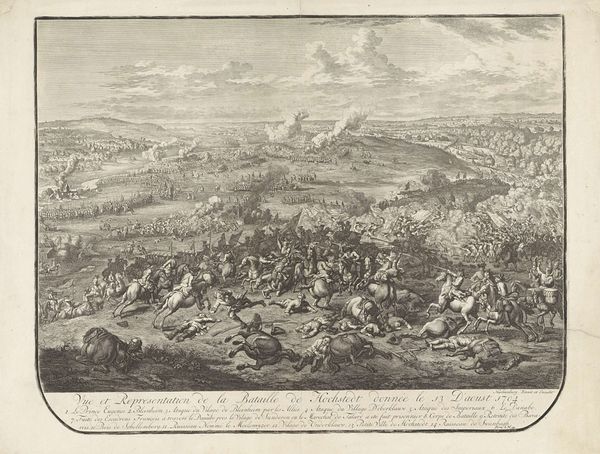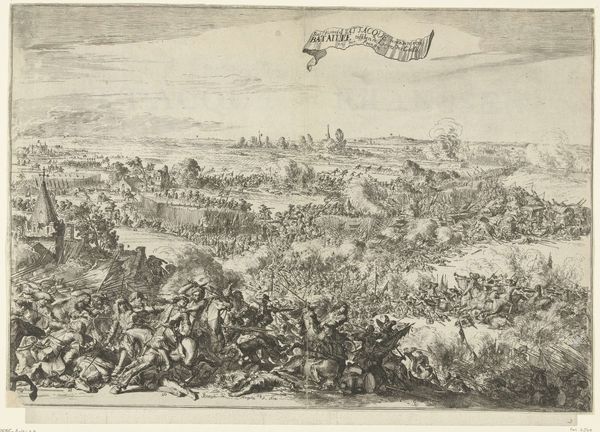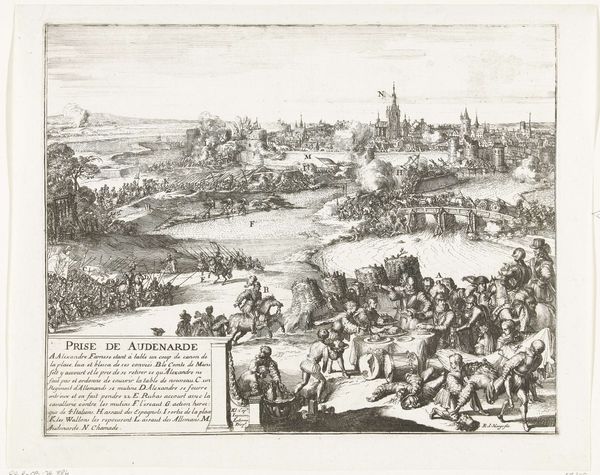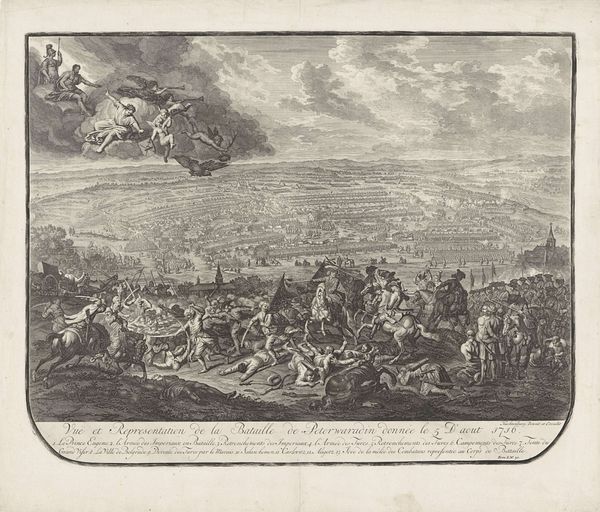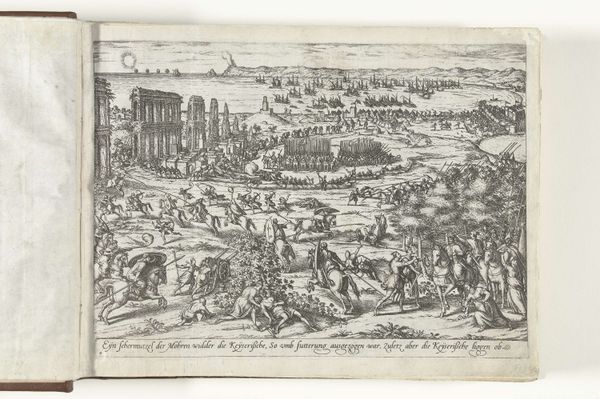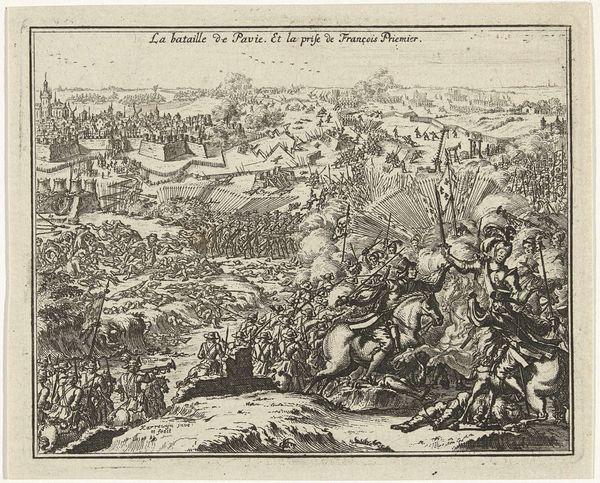
print, ink, engraving
#
baroque
#
pen drawing
#
mechanical pen drawing
# print
#
pen illustration
#
pen sketch
#
old engraving style
#
landscape
#
ink line art
#
ink
#
ink drawing experimentation
#
pen-ink sketch
#
pen work
#
sketchbook drawing
#
cityscape
#
history-painting
#
engraving
Dimensions: height 513 mm, width 610 mm
Copyright: Rijks Museum: Open Domain
Romeyn de Hooghe made this print titled, "Siege and Conquest of Namur," in 1695. It is a bird's-eye view of the siege of Namur, now in Belgium, during the Nine Years' War. De Hooghe’s sweeping panorama is packed with social and political meaning. Commissioned prints like this one served a vital function in shaping public opinion. As the Dutch Republic was locked in conflict with France, prints like this bolstered the Dutch national pride, reminding people what they were fighting for. The detailed rendering of the siege is no accident. Such images reflected the period’s fascination with military engineering and technology, celebrating the might of the Dutch army. The image also conveys the chaos and violence of war. The angelic figures overhead perhaps invoke divine favor, but they also serve to idealize what was, in reality, a brutal event. The historian uses maps, military records, and period publications to reveal the print’s role in the political landscape of its time. The true meaning of art often lies in the rich, complex circumstances of its creation.
Comments
No comments
Be the first to comment and join the conversation on the ultimate creative platform.

